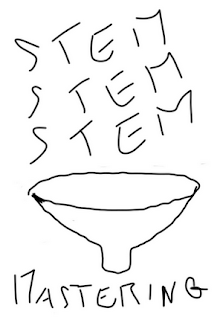Stereo and stem mastering: the differences
Some definitions
In the last years stem mastering has become a very common practice, but what is it? Let’s give two definitions:- Stereo Mastering (also known as "standard mastering"). This is the processing of the entire mixdown, comprehensive of every track. It is done to improve the audio quality and, often, to raise the perceived output level
- Stem Mastering. This consists of three steps:
- Processing of groups (“stems”) of single tracks. This process can be simple (setting only the output level) or complex (in this case the single stems are also equalized, compressed and so on)
- Rendering of the mixdown
- Standard mastering of the mixdown
So, stem mastering is basically a compromise between mixing and audio mastering. It is a mixing of stems (and not singular instruments), followed by a standard mastering of the mixdown. Stems can be of various typologies. Here are some frequent cases, but there are many different examples too:
- All the instruments in one stem, all the voices in the second one
- Main voice, other voices, instruments
- Main voice, other voices, rhythmic section (bass, drums, percussions), other instruments
- Main voice, other voices, rhythmic section, soloist instruments, other instruments
Advantages and disadvantages of the stem mastering process
The complexity here is proportional to the number of stems, but depends also on their sound. If stems have already been properly processed (equalized, compressed) in the mixing stage, then the mastering engineer could simply set their output level before rendering the mixdown. On the other hand, if stems have not been properly processed in the mixing stage, then they should be equalized and compressed in the mastering stage, thus increasing the complexity of the process.All these aspects determine a higher price for stem mastering compared to the standard solution. Which are the benefits?
- The main advantage is that you can process separately the voice from the instruments. In the stereo mastering process, the equalization impacts both on the voice and on the instruments. It can bring balance in the voice and unbalance in the instruments, or conversely
- In a similar way, you can process the sound with less compromises. For example, it is possible to smooth out the mid high frequencies of the guitars without losing the presence of the trumpets; it is possible to increase the rhythmic section low frequencies without mudding the sound of the other instruments
- All these aspects allow the mastering engineer to apply minor adjustments in the final stereo mastering of the mixdown

Comments
Post a Comment